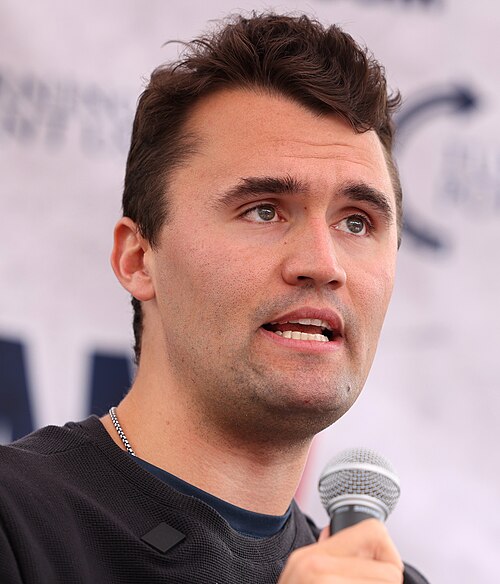Donald Trump calls for the death penalty for the worst criminals. He frames it as strength, as proof of his will to deliver justice. However, the same Trump once admitted in an interview: “There are a lot of killers. You think our country’s so innocent?” That line was not an accident. Instead, it was a rare confession, one that revealed what most politicians prefer to hide.
At the same time, America faced the shocking news of Charlie Kirk’s tragic death. His assassination dominated the airwaves, filling the news cycle and fueling political commentary. Yet, while this one case consumed public attention, millions of silent deaths went unnoticed. Trump’s words about killers suddenly sounded more relevant than ever.
Why one death dominates the news
In order to understand this imbalance, we must look at how people react to tragedy. One violent death becomes a spectacle. The media places a name, a face, and a story into the public mind. Consequently, sympathy grows, anger spreads, and politicians rush to speak.
By contrast, systemic deaths — slow, faceless, and statistical — fail to ignite outrage. This is because human psychology evolved to respond to individuals, not to masses. As the bitter phrase reminds us: one death is a tragedy, millions are a statistic. Therefore, Kirk’s death felt personal, while health care deaths remain abstract. As a result, the spotlight blinds society to greater killers that claim lives every day.
Diseases as the most powerful killers
Nevertheless, the most powerful killers in America are not assassins. They are diseases. Heart disease strikes daily. Cancer erodes lives across every community. Diabetes and infections quietly end futures. These killers have no ideology, but they have scale.
Moreover, their power grows when people lack access to health care. A treatable tumor becomes fatal without coverage. A cheap antibiotic withheld leads to sepsis and death. An insulin shortage turns manageable diabetes into tragedy. These are not natural outcomes. Rather, they are deaths caused by systemic neglect.
Trump’s proposed cuts — the so-called “One Big Beautiful Bill” and its connected legislation — would strip 10 to 20 million Americans of insurance by 2034. Consequently, millions will face diseases without treatment. In turn, this will mean millions of silent deaths. Unlike Kirk’s case, they will not appear on television. They will happen quietly, family by family, until the numbers surpass any war or terrorist attack.
The hidden private killers
Still, Trump’s words about killers stretch further. He admitted that America has many killers, and among them are hidden, private assassins. These contract killers are hired by private subjects to eliminate people considered undesirable. Although they are a small minority compared to disease, they prove that America’s violence is not limited to crime statistics or foreign wars.
They operate in shadows, with payments exchanged in secret. They silence whistleblowers, competitors, or inconvenient figures. And because they remain in the dark, society pretends they do not exist. Trump, however, acknowledged killers in America, but he focused only on the visible ones. Thus, while he demands the death penalty for public criminals, the hidden private killers continue untouched.
Comparing the scales of death
When we compare these killers, the imbalance becomes striking. One assassination like Kirk’s shakes the entire nation. Meanwhile, millions dying from untreated diseases barely shift public debate. Both belong to the landscape Trump described, yet their scales are incomparable.
Furthermore, history strengthens this contrast. Even the Czechoslovak communists, ruling a smaller nation with iron repression, never produced such a death toll. They executed hundreds, sent thousands to prisons, and shot people at the border. Their brutality scarred generations, but it did not reach millions. In contrast, the future lack of U.S. health care could cause millions of premature deaths. Although the contexts differ, the logic stands: democratic neglect can kill more than dictatorship’s repression.
The politics of neglect
Why, then, do politicians refuse to act? The answer lies in power. Tackling disease requires breaking the interests of insurers, pharmaceutical giants, and hospital chains. Moreover, it requires higher taxes, longer planning, and unpopular truths. Consequently, leaders choose the easier path. They demand punishment for a handful of criminals instead of preventing the silent slaughter of millions.
Trump illustrates this contradiction perfectly. He named the killers, but he never fought them. Instead, he redirected anger toward public villains who can be executed for applause. Meanwhile, the private assassins keep working in the shadows, and the diseases keep harvesting lives without resistance. The politics of neglect ensures that the hidden killers remain hidden.
Conclusion: the killers left untouched
Therefore, the hierarchy of killers is unmistakable. At the top stand diseases, the supreme executioners of modern society. Behind them lurk private assassins, rare but real, proving that violence exists not only abroad but also within America’s own borders. Together, they confirm Trump’s remark: America is not innocent.
Yet the real scandal does not lie in the rare assassin’s bullet. It lies in the tolerated mass death from untreated illness. It lies in a political class that mourns one face on television while ignoring millions of preventable deaths. Even the Czechoslovak communists, ruling a far smaller country, never matched such a toll. Their killings were brutal, but they were counted in thousands, not millions. America, through neglect of health care, risks a toll beyond comprehension.
Trump admitted that there are many killers. The tragedy is that he chose to leave the worst ones untouched. And unless America faces this truth, Kirk’s death will remain a headline, while millions more will die without a word, victims of killers far more powerful than any assassin.

Leave a Reply